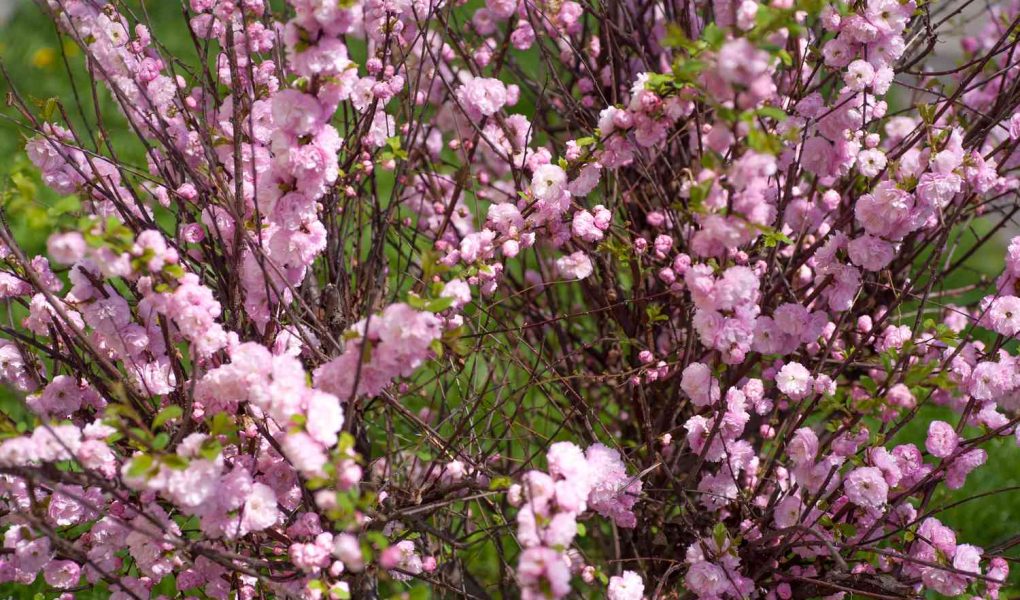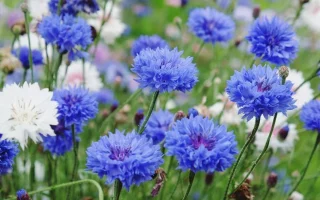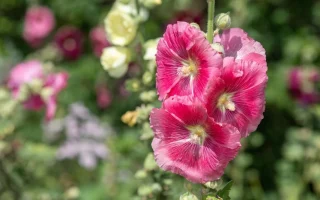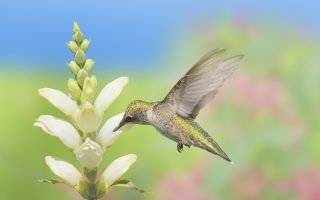lareddepathways.com – The Pink Flowering Almond (Prunus glandulosa) is a charming deciduous shrub that brings a burst of color to gardens in early spring. Known for its profuse, delicate pink blossoms and graceful, compact form, the Pink Flowering Almond is a popular choice for gardeners looking to add an eye-catching display to their landscape. This flowering shrub, which is a member of the rose family, is celebrated for its stunning spring flowers and its ability to thrive in a variety of garden settings. Whether used as a hedge, a specimen plant, or an ornamental shrub in mixed borders, the Pink Flowering Almond adds beauty and a touch of nostalgia to any garden.
Physical Characteristics
Pink Flowering Almond is a compact shrub that typically grows between 3 to 6 feet (90 to 180 cm) in height, making it an ideal size for small to medium-sized gardens. Its graceful, arching branches are lined with small, dark green leaves that provide a lovely backdrop to its brilliant spring flowers. The flowers of the Pink Flowering Almond are the highlight of the plant, blooming in early to mid-spring, often before the leaves fully emerge. The blossoms are soft pink, often double or semi-double in form, with a fluffy, ruffled appearance. The flowers are typically 1 to 2 inches (2.5 to 5 cm) in diameter and grow in clusters, creating a profuse display of color. After flowering, the plant produces small, dark fruits, which are not typically ornamental but add seasonal interest as they ripen.
Growing Conditions
The Pink Flowering Almond thrives in full sun to partial shade, with full sun promoting the best flowering and overall growth. It prefers well-drained, slightly acidic to neutral soil and can tolerate a range of soil types, as long as there is good drainage. While it is somewhat drought-tolerant once established, regular watering during dry periods will ensure the plant remains healthy and continues to flower profusely. Pink Flowering Almond is relatively low-maintenance and is suited to various garden environments, from shrub borders to foundation plantings and mixed beds. It can also be used as a flowering hedge, where it can provide privacy and seasonal interest. The shrub is hardy in USDA zones 4 to 8, making it suitable for a wide range of climates. However, it may require some winter protection in colder areas, especially if exposed to harsh winds or heavy frost.
Uses in Gardening and Landscaping
Pink Flowering Almond is a versatile plant in the landscape, offering both ornamental value and practical benefits. Its early spring flowers create a striking focal point in gardens, making it a favorite for planting near entryways, along walkways, or in mixed borders. It also works well as a flowering hedge, where it can provide seasonal interest and privacy without growing too tall. Its compact size makes it ideal for smaller gardens, urban landscapes, or as an accent plant in larger gardens. In addition to its visual appeal, the Pink Flowering Almond attracts pollinators like bees and butterflies, which enjoy the nectar-rich flowers. It is also well-suited for use in cottage gardens, where its nostalgic charm can complement other spring-blooming plants like tulips, daffodils, and primroses.
Health and Medicinal Benefits
While the Pink Flowering Almond is primarily valued for its ornamental beauty, the flowers of the related Prunus species have been used in traditional medicine in some cultures. However, the Pink Flowering Almond itself is not commonly used for medicinal purposes. The plant’s fruit is small and not generally considered edible or useful for making herbal remedies. In fact, many species of Prunus, including the Pink Flowering Almond, contain compounds that may be toxic if consumed in large quantities. Therefore, it is best to enjoy the Pink Flowering Almond for its aesthetic value rather than for any medicinal benefits.
Ecological Importance
The Pink Flowering Almond is an excellent plant for supporting local pollinators, particularly bees and butterflies. The abundant, nectar-rich flowers provide an early food source for these beneficial insects, making it a valuable addition to a pollinator-friendly garden. By planting the Pink Flowering Almond, gardeners can contribute to the health of local ecosystems and support biodiversity. Additionally, the dense foliage of the shrub offers shelter for small birds and insects, helping to create a more balanced garden environment. Although the plant’s fruit is not widely consumed by wildlife, its role in supporting pollinators is significant.
Conclusion
The Pink Flowering Almond is a beautiful, low-maintenance shrub that brings a burst of color and elegance to gardens in early spring. With its delicate pink flowers, compact size, and ability to thrive in a variety of garden settings, it is an ideal choice for gardeners looking to add a pop of seasonal color to their landscape. Whether used as a hedge, specimen plant, or in mixed borders, the Pink Flowering Almond offers both aesthetic and ecological value. Its ability to attract pollinators and its stunning blooms make it a beloved addition to gardens, bringing beauty and interest during the early days of spring.




